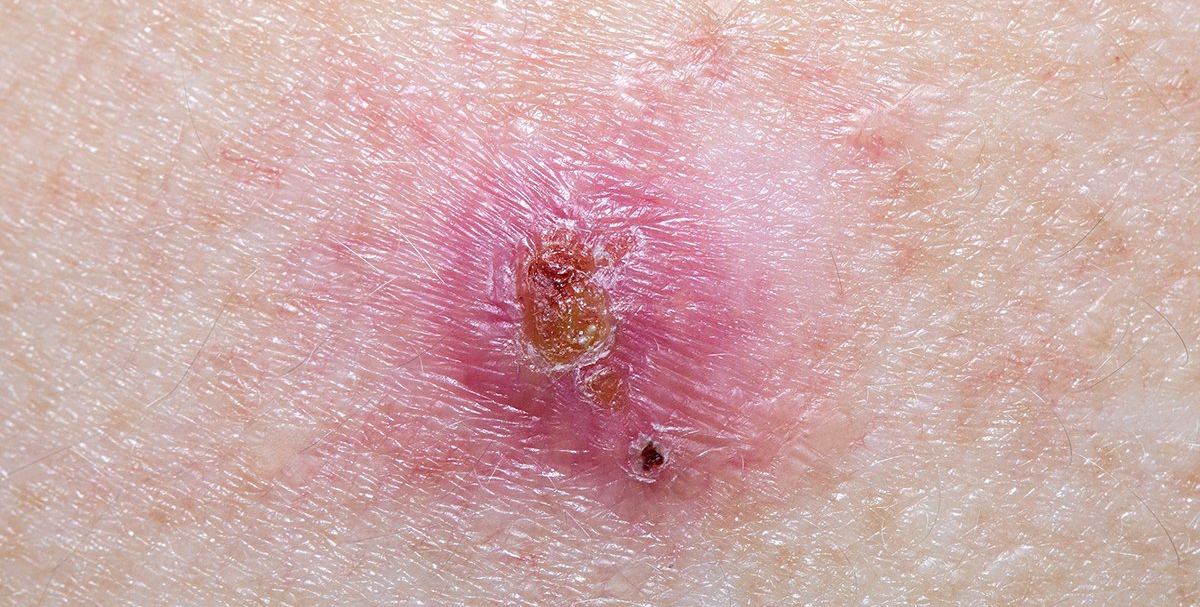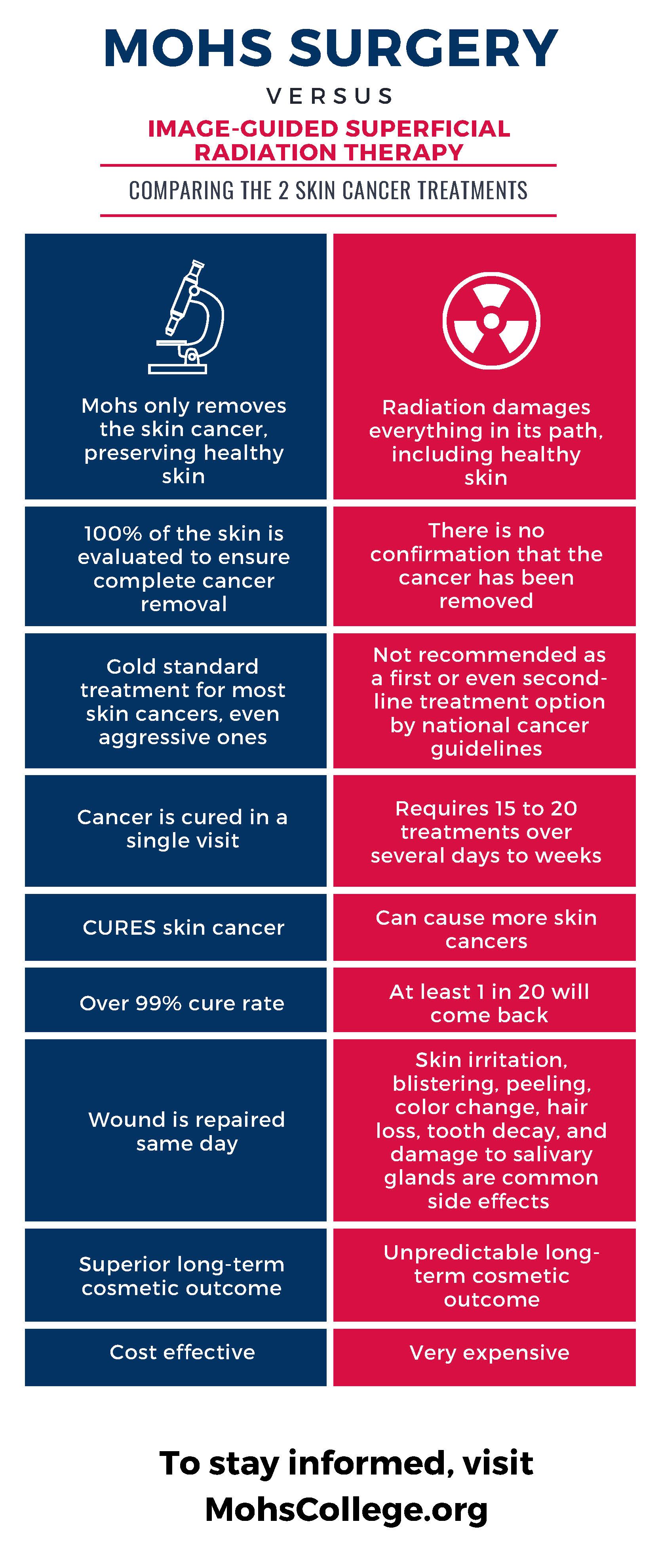What is a basal cell carcinoma?
Basal cell carcinoma is the most common form of skin cancer. It is estimated that over 3.6 million cases are diagnosed each year in the U.S. alone. Some reports estimate that basal cell carcinomas account for up to 32% of all cancers globally.
What does a basal cell carcinoma look like?

Basal cell carcinomas are usually raised areas of skin that are red, pink or even skin-colored with a shiny or pearly quality. They can often ulcerate and look like a chronic sore. Many patients state that they will spontaneously bleed after taking a shower or that their pillowcase has blood on it in the morning. Chronic sores that bleed are never normal and almost always need evaluation from a board-certified Dermatologist.
When treated early, especially with Mohs micrographic surgery, the cure rate can reach up to 99%.
Where are basal cell carcinomas usually located?
Basal cell carcinomas can be located anywhere there is skin. However, the most common location is usually somewhere on the head, neck, face, ears, lips or forearms – all of the areas that get the most sun-exposure throughout our lifetimes.
Why is it important to treat basal cell carcinomas early?
Without treatment, basal cell carcinomas continue to grow past the skin down to fat, muscle or even bone. This can significantly impact the quality of your life. When they are allowed to grow for months or even years, it becomes increasingly more difficult to treat without extensive surgery. When treated early, especially with Mohs micrographic surgery, the cure rate can reach up to 99%.
Taking action.
If you are concerned that you may have a basal cell carcinoma on your skin, the best thing to do is to visit a board-certified Dermatologist. They have special training to identify quickly and accurately if the lesion of concern is a basal cell carcinoma or another type of skin cancer. Many times, the biopsy can be done on the same day as your visit. From there, a personalized plan of care will be discussed for you or your loved one.
Some board-certified Dermatologists also completed an additional year of fellowship-training in Mohs Micrographic Surgery and Dermatologic Oncology. These specialized dermatologic surgeons that spent an additional year of training provide the best care possible, with the highest cure rate for skin cancer. At Trinity Dermatology, we provide this high quality of care for our patients.
If you or a loved one want to get evaluated for a potential skin cancer, or would like a full body skin examination to look for skin cancers, we are scheduling appointments within 1-2 business days. Please call
816-643-4501 or
contact us today to book an appointment.





